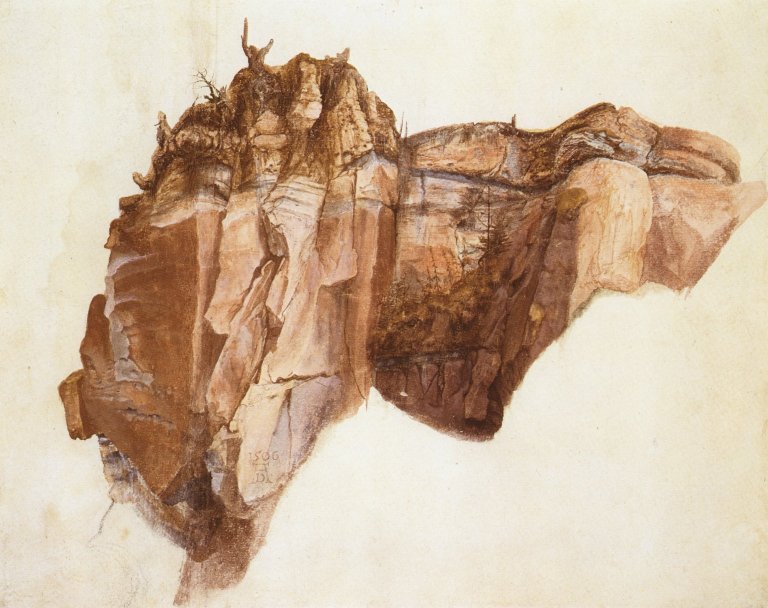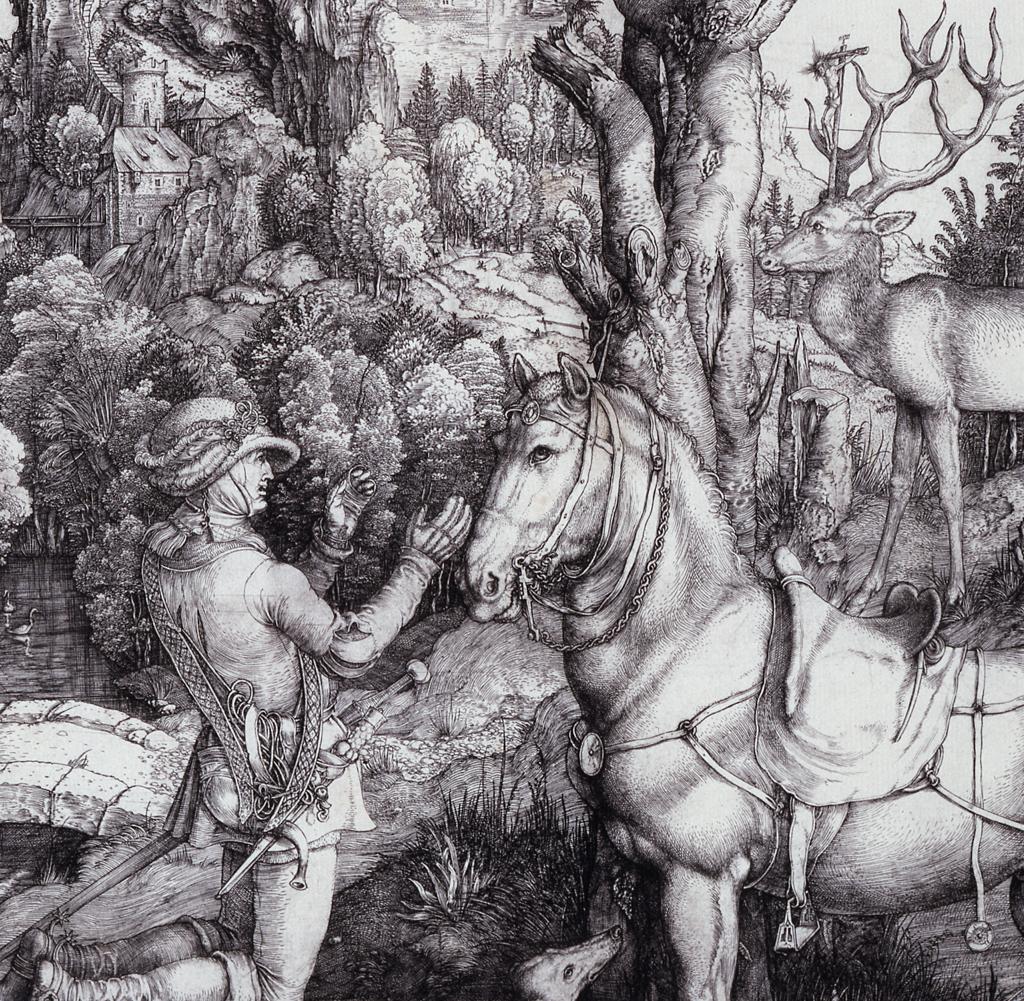Study of Rocks or Quarry

Albrecht Dürer, Study of Rocks or Quarry, ca. 1495. Watercolor, 22.5 x 28.7 cm. London, British Museum, inv. no. 5218-166.
In this watercolor of rock formations, red-brown colors predominate. Different types of vegetation drape the larger cliffs. Exposed roots, bare trees, weeds, and branches are scattered amidst the rocks. The artist’s interest in juxtaposing stone and organic growth prevails. Quarries, in and of themselves, are not considered to be appealing subjects, yet Dürer’s attentiveness to surface and structural details enlivens these natural elements. This watercolor forms part of a group of five studies Dürer made of rock formations after returning from his first trip to Italy in 1495. Most scholars agree that a later hand (not Dürer) added the 1506 date found at the bottom of the pile of stones on the left (note 1). Dürer could have based this image on rock formations he saw during his journey to Italy or near his hometown, on the outskirts of Nuremberg. In either case, his purpose was not to create topographical records, but rather, to develop an artistic motif he could reuse in other works to lend them a desired atmosphere. Cliffs were a traditional motif in northern European art in the fifteenth century, and Dürer, aiming to surpass his predecessors, produced refined studies of quarries in order to be able to stage them in his own art.
Notes:
note 1. For further information on scholarly opinion on the dating of this watercolor, consult Walter Koschatzky, Albrecht Dürer: The Landscape Water-Colors, (New York, 1973), plate 19.
